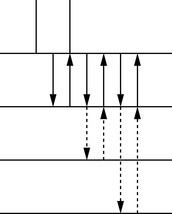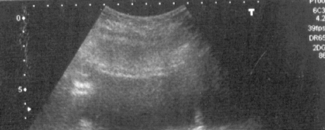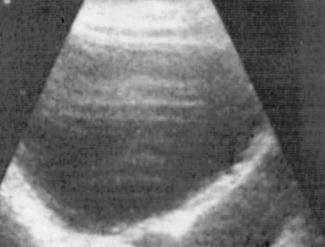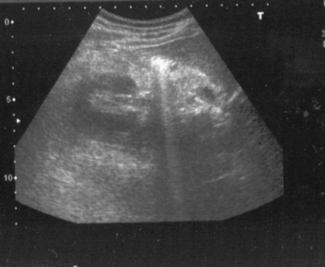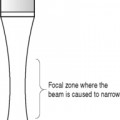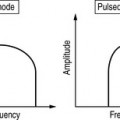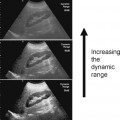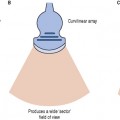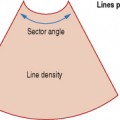Chapter 9 Artifacts
An ultrasound artifact is a structure in an image which does not directly correlate with actual tissue being scanned. Artifacts assume different forms, including:
ASSUMPTIONS MADE BY ULTRASOUND EQUIPMENT
Ultrasound machines have to make certain assumptions in order to operate. These are:
Several possible artifactual appearances may occur:
REVERBERATION
This is the production of spurious (false) echoes due to repeated reflections between two interfaces with a high acoustic impedance mismatch. The echo from the interface is received by the transducer and displayed on the image. Some of the energy in the returned echo is reflected at the transducer face, and returns to the reflecting interface as if it was a weak transmitted pulse, returning as a second echo (reverberation). As the time taken for the second echo to arrive is twice that taken by the first echo, the image will display it at twice the depth. This sequence of reflection and transmission can occur many times, with the third echo taking three times as long to return to the transducer and being displayed at three times the depth, and so on. The reverberation echoes will be equally spaced because the time for each additional echo is a multiple of the time of return of the first echo. These reverberation echoes will be strong because of the high acoustic mismatch (see Fig. 9.1).
This artifact will often be seen:
The artifact can be differentiated from real echoes due to the lack of breathing movement occurring.
To help to eliminate this artifact it may be useful to:
ACOUSTIC SHADOWING
This appears as an area of low amplitude echoes (hypoechoic or anechoic) behind an area of strongly attenuating tissue. It is caused by severe attenuation of the beam at an interface, resulting in very little sound being transmitted beyond (see Fig. 9.5). The attenuation can be due to either absorption or reflection of the sound waves, or a combination of the two.
Acoustic shadowing will occur at interfaces with a large acoustic mismatch such as:
Stay updated, free articles. Join our Telegram channel

Full access? Get Clinical Tree


